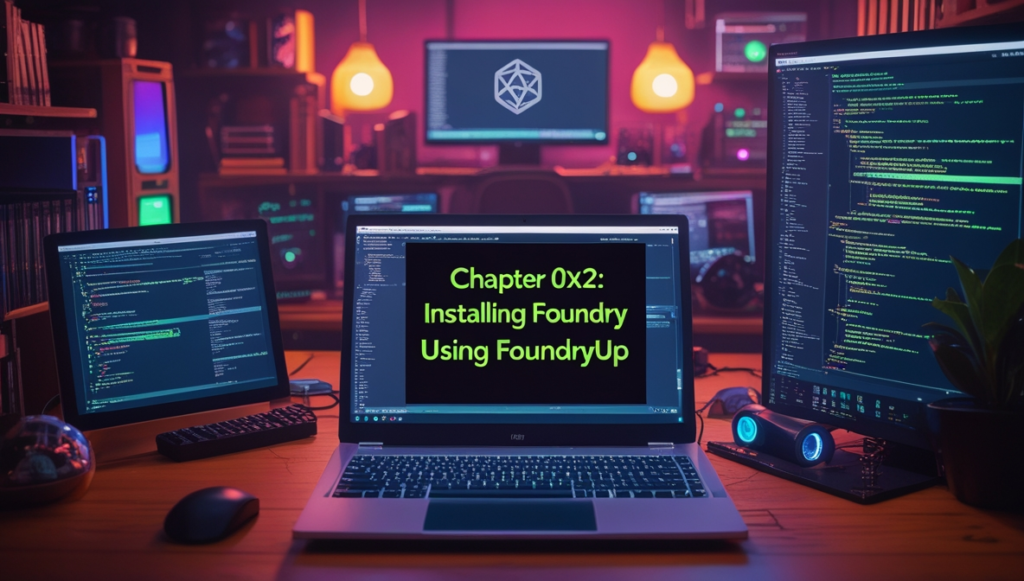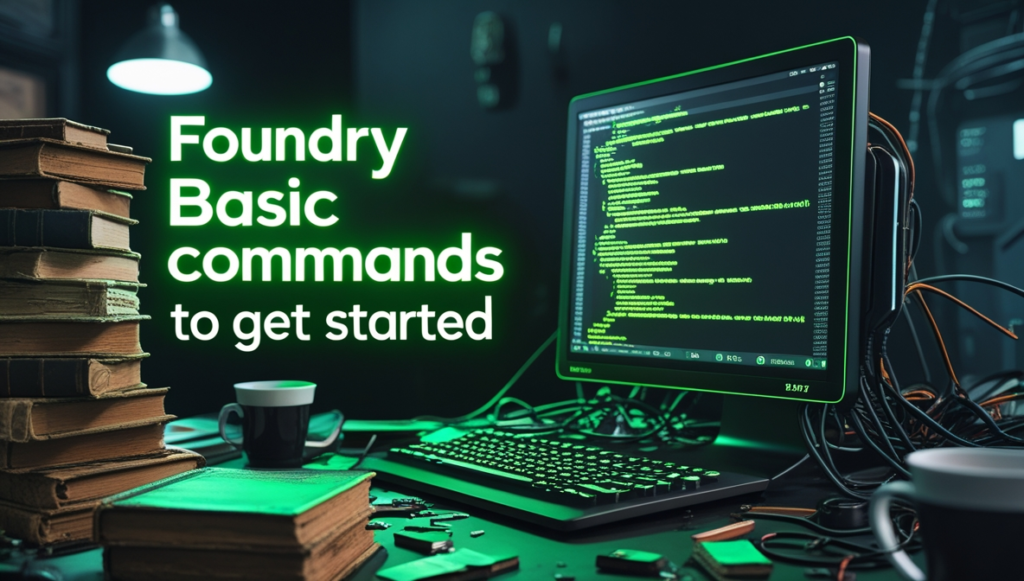Hey there! So, you’ve decided to dive into the world of smart contract development using Foundry, huh? Awesome choice! Foundry is like the Swiss Army knife for Ethereum developers—it’s fast, flexible, and super developer-friendly. Whether you’re a complete beginner or just looking to switch to Foundry, this guide will walk you through everything you need to know about installing Foundry, verifying the installation, updating Foundry tools, and using basic commands. By the end of this tutorial, you’ll be ready to start building and testing smart contracts like a pro.
Let’s get started, shall we?
Table of Contents
Why Foundry? (And Why You’ll Love It)
Before we jump into the installation process, let’s take a quick moment to talk about why Foundry is such a big deal. Foundry is a fast, portable, and modular toolkit for Ethereum development, and it’s written in Rust (which means it’s super speedy). It comes with tools like Forge (for testing and deployment) and Cast (for interacting with Ethereum networks). If you’re working with Solidity, Foundry is a dream come true because it lets you write tests in Solidity itself. No more switching between languages—just pure, seamless development.
Plus, it’s open-source and has a super active community. What’s not to love?
Installing Foundry Using Foundryup

Alright, let’s get to the good stuff—installing Foundry. The easiest way to do this is by using foundryup, a command-line tool that makes the installation process a breeze. Foundryup works on Windows, macOS, and Linux, so no matter what system you’re using, you’re covered. Let’s break it down step by step.
1. Install Foundry on Windows
If you’re on Windows, you’ll need to have Git Bash or Windows Subsystem for Linux (WSL) installed. Here’s how to get Foundry up and running:
- Open your terminal (Git Bash or WSL).
- Run the following command to download and install Foundry:
curl -L https://foundry.paradigm.xyz | bash- After the script runs, it’ll prompt you to add Foundry to your PATH. Just follow the instructions, and you’re golden.
- Once Foundry is installed, you can verify the installation by running:
foundryupThis command ensures you have the latest version of Foundry installed.
2. Install Foundry on Mac
Mac users, you’re in luck—the process is even simpler for you. Just open your terminal and run:
curl -L https://foundry.paradigm.xyz | bashAfter the installation is complete, run foundryup to make sure everything’s set up correctly.
3. Install Foundry on Linux (Ubuntu)
For my Linux folks, especially those on Ubuntu, the installation process is pretty much the same:
- Open your terminal.
- Run the following command:
curl -L https://foundry.paradigm.xyz | bash- Add Foundry to your PATH if prompted.
- Run
foundryupto verify the installation.
4. Brew Install Foundry (macOS/Linux)
If you’re a fan of Homebrew, you can also install Foundry using this command:
brew install foundryThis method is super handy if you already use Homebrew to manage your packages.
Verifying the Foundry Installation

Once you’ve installed Foundry, it’s important to make sure everything’s working as it should. Here’s how you can verify the installation:
- Open your terminal.
- Run the following commands to check the installed versions of Forge and Cast:
forge --version
cast --versionIf both commands return version numbers, congrats! You’ve successfully installed Foundry.
Troubleshooting: Foundryup Command Not Found
If you run into the error foundryup: command not found, don’t panic. It usually means Foundry wasn’t added to your PATH. Here’s how to fix it:
- Open your terminal.
- Add Foundry to your PATH manually by running:
export PATH="$PATH:$HOME/.foundry/bin"- Run
foundryupagain to verify the installation.
Updating Foundry Tools
Foundry is constantly evolving, with new features and improvements being released regularly. To make sure you’re always using the latest and greatest version, you can update Foundry tools using foundryup. Just run:
foundryupThis command will fetch and install the latest versions of Forge, Cast, and other Foundry tools.
Foundry Basic Commands to Get Started

Now that you’ve installed and verified Foundry, let’s dive into some basic commands to help you get started with smart contract development.
1. Creating a New Project
To create a new Foundry project, use the following command:
forge init my_projectThis will create a new directory called my_project with the basic structure for a Foundry project, including a sample smart contract and tests.
2. Compiling Smart Contracts
Navigate to your project directory and compile your smart contracts using:
forge buildThis command compiles all the Solidity files in your src directory.
3. Running Tests
Foundry makes it super easy to write and run tests for your smart contracts. To run the tests in your project, use:
forge testYou’ll see output indicating whether your tests passed or failed.
4. Deploying Contracts
To deploy a smart contract to a local or Ethereum network, use the forge create command. For example:
forge create --rpc-url <RPC_URL> --private-key <PRIVATE_KEY> src/MyContract.sol:MyContractReplace <RPC_URL> and <PRIVATE_KEY> with your network’s RPC URL and your wallet’s private key, respectively.
Setting Up Foundry in Smart Contract Development

Foundry is incredibly versatile and can be used for a wide range of smart contract development tasks. Here’s how you can set up Foundry for a typical project:
- Install OpenZeppelin in Foundry: OpenZeppelin is a popular library for secure smart contract development. To use OpenZeppelin contracts in your Foundry project, add them as a dependency:
forge install OpenZeppelin/openzeppelin-contracts- Write and Test Smart Contracts: Use Foundry’s testing framework to write comprehensive tests for your contracts. Foundry allows you to write tests in Solidity, making it easier to catch bugs and ensure your contracts are secure.
- Deploy and Interact with Contracts: Use Forge and Cast to deploy your contracts and interact with them on Ethereum or other EVM-compatible networks.
Foundry Solidity Tutorial for Beginners
If you’re new to Foundry, don’t sweat it! Foundry has excellent documentation, including the Foundry Book, which is a comprehensive guide to using Foundry for smart contract development. You can also find tutorials and examples on GitHub to help you get started.
For beginners, I recommend starting with simple projects and gradually exploring more advanced features like Foundry scripting and smart contract optimization.
Wrapping Up
Installing Foundry using foundryup is a piece of cake, whether you’re on Windows, macOS, or Linux. Once installed, Foundry provides a powerful set of tools for smart contract development, testing, and deployment. By following this guide, you’ve taken the first step toward mastering Foundry and building secure, efficient smart contracts.
Remember, the key to getting good with Foundry is practice. Start with small projects, experiment with different features, and don’t hesitate to explore the Foundry Book and community resources.
Happy coding, and welcome to the world of Foundry!🚀


